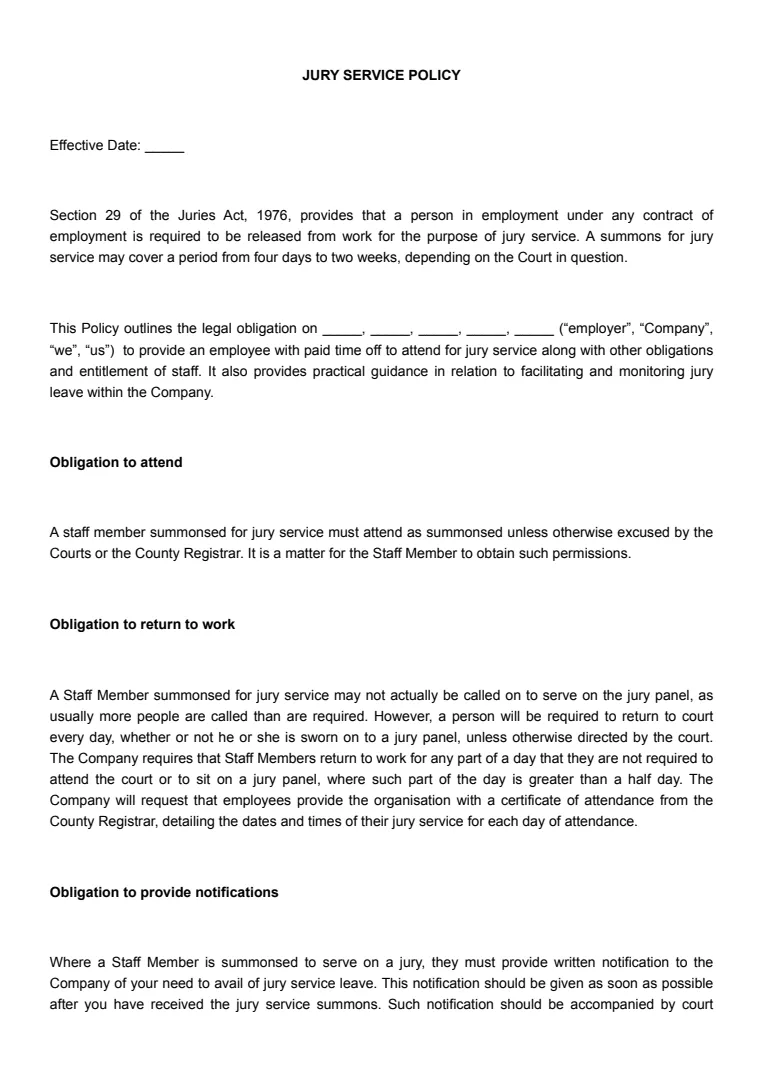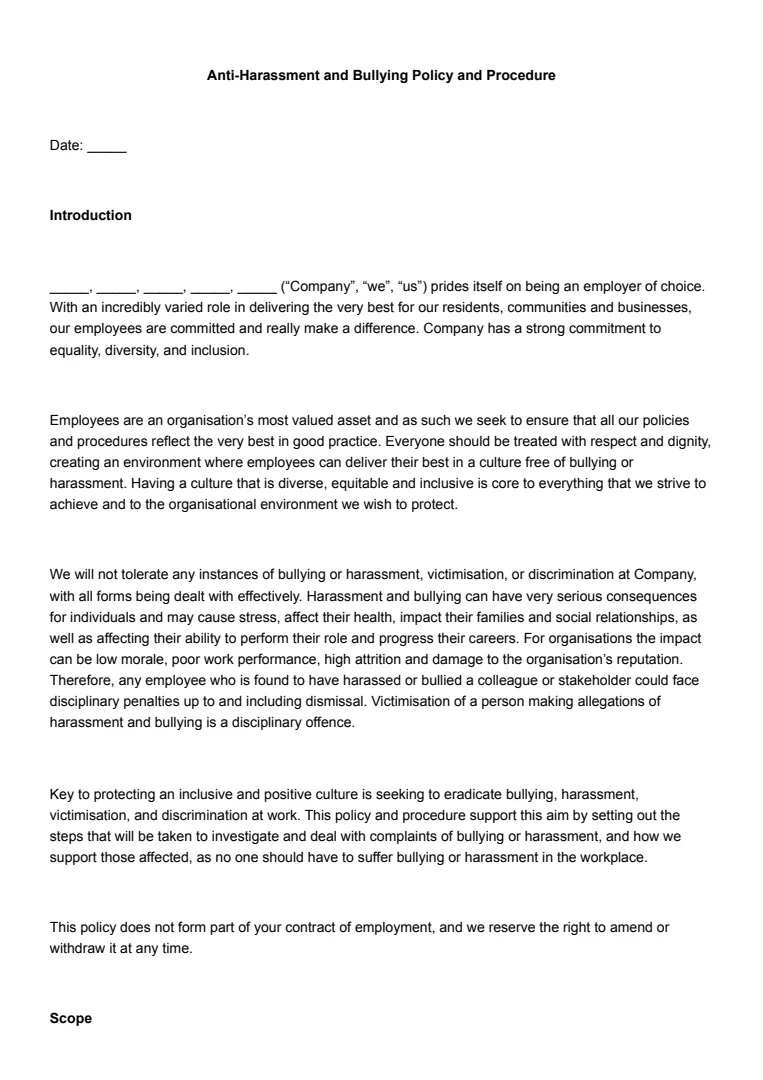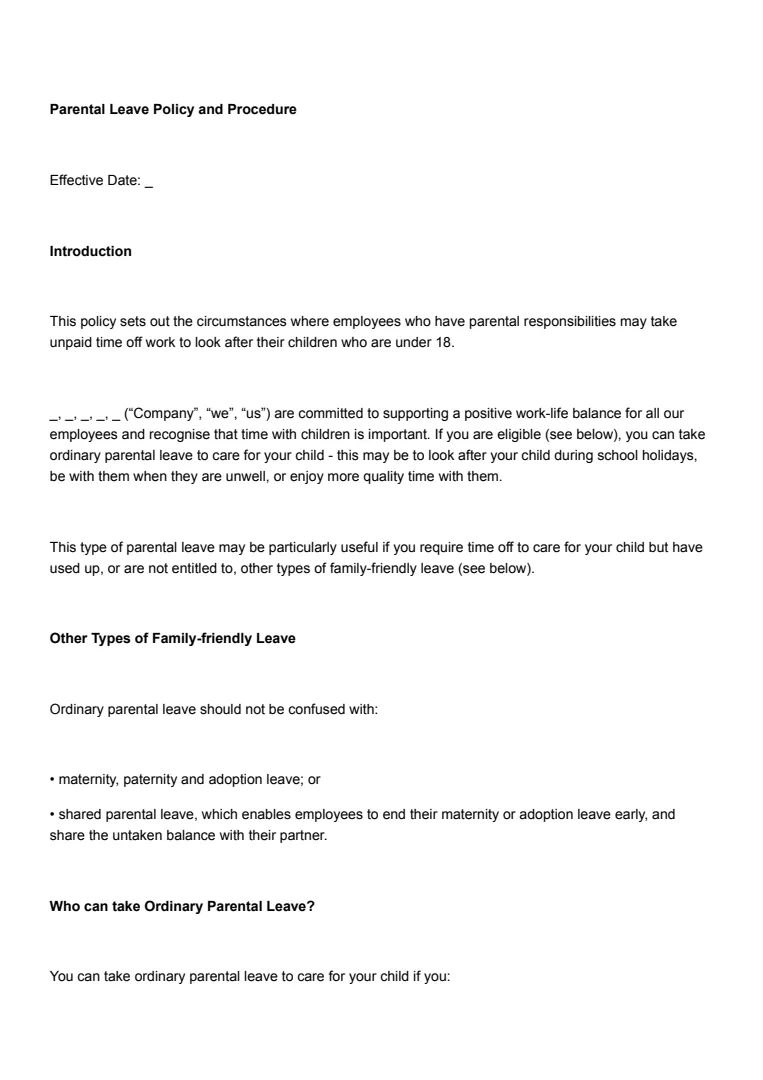What Is a Bereavement Leave Policy?
A bereavement leave policy is an internal HR or company document that outlines when employees can take time off following the death of a close family member, friend, or significant individual in their life.
It includes rules around eligibility, the duration of leave, whether the leave is paid or unpaid, what proof is needed, and the steps employees must take to request time off. For employers, it provides a framework that ensures all requests are handled fairly and within legal parameters.
Legal Context in the UK
Standard bereavement leave in the UK stems from several key pieces of legislation. Employees have the statutory right to take a “reasonable” amount of unpaid time off to deal with the death of a dependant under Section 57A of the Employment Rights Act 1996.
For parents who suffer the loss of a child under 18, or a stillbirth after 24 weeks, the Parental Bereavement Leave and Pay Regulations 2020 provide two weeks’ leave, which may be paid depending on the employee’s eligibility.
Employers must also be mindful of the Equality Act 2010, which prohibits discrimination, direct or indirect, based on protected characteristics, such as religion or belief. Failure to account for cultural or religious mourning practices could lead to legal consequences.
When Should You Use a Bereavement Leave Policy?
There are a few circumstances in which you should use a bereavement work policy.
1. Loss of an Immediate Family Member
Most bereavement leave policies are triggered by the death of an immediate family member, such as a spouse, child, parent, or sibling. These losses tend to have the most significant emotional and logistical impact, often requiring time to travel, attend funerals, and manage legal or financial matters.
Having a set number of days available, ideally paid, gives employees the mental space they need without financial stress, while also giving managers a predictable framework for handling absence.
2. Bereavement Involving Extended Family or Close Friends
In many cultures and family structures, close bonds extend well beyond the nuclear family. Grandparents, aunts and uncles, step-relatives, or chosen family may play a central role in an employee’s life.
Some policies allow employees to request additional leave for these cases on a discretionary basis. This approach allows for sensitivity while ensuring decisions are not made arbitrarily. Including examples in the policy can help set expectations.
3. Pregnancy or Neonatal Loss
Pregnancy loss, including miscarriage, stillbirth, and neonatal death, can be both physically and emotionally traumatic. These situations often require medical recovery as well as emotional healing.
UK legislation provides specific protections here. The GOV.UK guidance on Parental Bereavement Leave and Pay outlines eligibility and how the leave can be taken, either in one block or two separate weeks. Your policy should clearly signpost this to both managers and affected employees.
Expert Tip:
“If a stillbirth occurs after 24 weeks, the employee is entitled to both maternity leave and parental bereavement leave. Make sure your policy references both, and that HR understands when they can overlap.”
4. Trauma-related incidents
Bereavement following traumatic circumstances, such as suicide, workplace fatalities, or violent crime, may leave employees experiencing symptoms of PTSD, anxiety, or shock.
In such cases, a rigid “3-day policy” will not be sufficient. The employer has a duty of care to support recovery, which may include extended compassionate leave, referrals to mental health support, or access to occupational health services. You may also wish to consult obligations under the Health and Safety at Work Act 1974, particularly with regard to employee welfare.
How to Write a Bereavement Leave Policy
Here is a step-by-step guide to writing a clear and comprehensive bereavement leave policy.
Step 1: Clarify Who Is Eligible
Eligibility should be defined clearly, including examples of what constitutes a “close relative” or “dependant.” Some policies use language like “any person with whom the employee had a close, personal relationship” to allow discretion in cases such as the loss of a best friend, housemate, or non-biological guardian.
Clarity avoids misunderstandings and ensures fairness, especially when different employees may have varied family structures or cultural expectations.
Step 2: Set Leave Duration and Pay
The policy should clearly distinguish between paid and unpaid leave, and outline how many days are available in each category. For example, you might offer five days of paid leave for immediate family and two days for extended family or other relationships, with scope to request more unpaid leave if needed.
The policy should also explain whether the leave must be taken as a single block or split, and how it interacts with annual leave or sick leave. Addressing pay up front avoids confusion at an already stressful time.
Expert Tip:
“Many businesses offer full pay for bereavement leave, even where the law only requires unpaid leave. Just two to five days of paid leave can dramatically boost employee trust and reduce attrition.”
Step 3: Outline Notification Procedures
When grieving, employees are unlikely to have the capacity for administrative tasks. That’s why the notification process should be as simple as possible, with clear instructions on whom to contact (usually their line manager or HR), how quickly (ideally as soon as reasonably possible), and whether documentation is required.
The policy should include whether a death certificate, funeral notice, or other evidence is necessary—and confirm that any such documents will be treated with sensitivity and confidentiality.
Step 4: Address Returning-to-Work Support
Many employees returning from bereavement leave will still be grieving and may struggle to immediately resume full productivity. The policy should provide managers with practical tools, such as arranging return-to-work meetings, offering phased hours, or temporarily adjusting performance expectations.
Making employees feel supported in the weeks following their return reduces the likelihood of burnout, presenteeism, or prolonged absence.
Expert Tip:
“Consider offering a private return-to-work meeting after bereavement leave, not for a performance review, but to understand what support the employee may still need.”
Step 5: Use Legally.io’s Document Generator
Drafting a compliant and sensitive bereavement policy from scratch can be challenging, especially for small HR teams. Legally.io’s policy generator is designed for UK organisations and helps build a legally robust policy tailored to your industry, size, and preferred tone of voice.
It also includes manager guidance and optional clauses that reflect your company values, helping ensure consistency and reducing the risk of legal oversights.
What Should a Bereavement Leave Policy Contain?
It’s important to include certain key details in your bereavement leave policy.
1. Eligibility and Definitions
This section should list the specific relationships that qualify for leave: immediate family, extended family, and significant others. It’s important to be inclusive and recognise diverse family structures while also managing the scope of leave requests.
Definitions should be precise but flexible, allowing HR discretion to assess individual circumstances without creating the risk of inconsistent treatment.
2. Leave Duration, Pay and Benefits
Provide a table or list that outlines how much paid leave is offered per relationship type, whether unpaid compassionate leave is available after that, and whether employees may use holiday leave if additional time is needed.
Clarify if benefits such as pension contributions, bonuses, or allowances continue during paid leave, and whether statutory payments apply. This helps employees plan financially during a difficult period.
3. Notification and Documentation
This part should include the notification timeline (e.g., “as soon as reasonably practicable”), acceptable contact methods (email, phone), and when evidence is or isn’t needed.
Make it clear that employees will not be expected to discuss personal details they’re uncomfortable sharing and that documentation requirements will be handled with discretion.
4. Continuity of Pay & Benefits
Explain whether normal pay continues during bereavement leave, how long payments will last, and what happens with performance bonuses or incentive plans.
If statutory bereavement payments apply (such as Statutory Parental Bereavement Pay), outline how employees apply and whether the employer will top up these payments.
5. Return-to-Work and Well-Being Support
This section should encourage open communication and offer options for adjustments, such as a phased return, reduced duties, or counselling referrals.
Managers should be trained to handle these conversations with empathy and flexibility. You might also highlight any Employee Assistance Programme (EAP) or third-party bereavement charities available.
6. Confidentiality and Data Protection
Clearly state that any personal or sensitive information disclosed, such as medical notes, death certificates, or causes of death, will be handled under the UK GDPR and Data Protection Act 2018.
Reassure employees that their privacy will be respected and that data will only be accessed by those with a legitimate need.
Legal Tips for Bereavement Leave Policies
Here are some legal tips to bear in mind when creating a bereavement leave policy.
1. Go Beyond Statutory Minimums
The legal minimum for bereavement leave in the UK is, in most cases, unpaid. Offering even a few days of paid leave can greatly improve employee satisfaction and retention.
It also strengthens your employer brand and sends a clear message that the company values people, not just productivity.
2. Avoid Indirect Discrimination
Cultural and religious differences influence mourning periods and family responsibilities. A narrow policy can disproportionately affect certain groups and may be challenged under the Equality Act 2010.
Where possible, include flexible language and allow for discretion to ensure equitable treatment.
Expert Tip:
“Religious beliefs can significantly influence mourning customs. Failing to consider these in policy application could risk a claim under the Equality Act 2010.”
3. Train Managers and HR Teams
Consistency is crucial. A policy is only as good as its implementation. Ensure managers understand when the policy applies, how to respond to requests, and how to support staff appropriately.
Include bereavement policy training as part of regular people management development programmes.
Key Takeaways
A comprehensive bereavement leave policy is more than just a document—it’s a reflection of your company’s values and a tool for responsible people management.
By setting out clear eligibility, procedures, pay entitlements, and support structures, you help employees navigate loss with dignity while maintaining workplace continuity.
Review your policy regularly and ensure your managers are trained to apply it compassionately and consistently.
Legally’s policy generator can simplify the drafting and updating process, helping you stay both compliant and caring.













